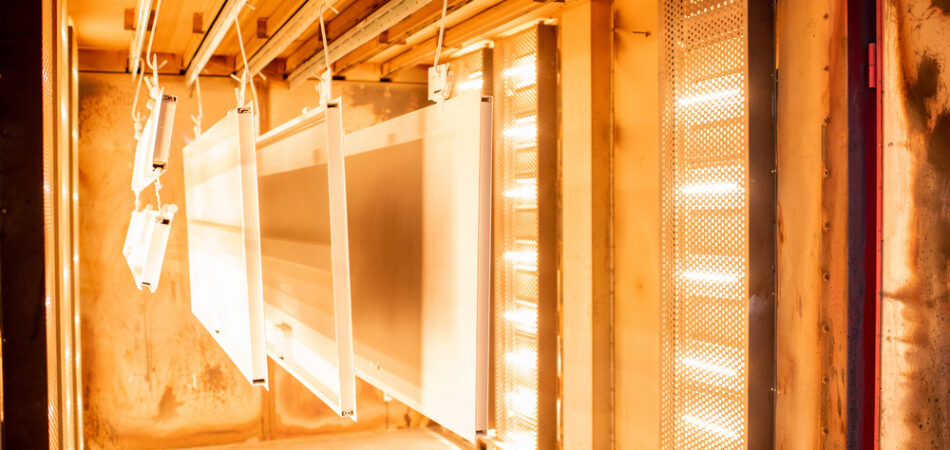
Powder coating has become the finishing method of choice for many industries, especially in automotive and motorcycle customization. Its ability to provide a smooth, durable surface that resists scratches, chips, and corrosion has made it a superior alternative to liquid paint in many applications. But when it comes to cars and motorcycles, one factor often overlooked is the role of heat resistance in powder coating. Understanding how heat-resistant powder coating works and why it matters can make all the difference in the longevity and performance of your vehicle’s parts.
How Powder Coating Works on Automotive and Motorcycle Surfaces
Powder coating begins with a finely ground mixture of resins, pigments, and other additives that are electrostatically applied to a metal surface. Once applied, the coated item is cured in an oven, where the powder melts and chemically bonds into a continuous, protective film. This process creates a surface finish that is harder, more resilient, and more resistant to wear than most traditional paints.
For vehicles, the benefits go beyond looks. Powder coating for motorcycle frames, for instance, adds a protective layer that helps prevent rust and wear caused by exposure to the elements. Similarly, powder coating for car parts ensures that critical components like wheels, engine covers, and suspension pieces retain their integrity despite heat, vibration, and road debris. The process is both an aesthetic upgrade and a performance-enhancing solution, making it a favorite among professionals and enthusiasts alike.
The Role of Heat Resistance in Powder Coating
Not all powder coatings are created equal. While standard powder coatings provide strong protection against corrosion and mechanical wear, they may not withstand the extreme temperatures generated by automotive engines or motorcycle exhaust systems. This is where heat-resistant powder coating plays a vital role.
Heat-resistant powders are specifically engineered to endure temperatures ranging from 300°F to over 1000°F, depending on the formulation. The science behind this resilience lies in the polymers and curing agents used, which form cross-linked molecular structures capable of withstanding high thermal stress without degrading. This ensures that the coating maintains its adhesion, color, and protective qualities even in harsh conditions.
Motorcycle exhaust pipes, brake calipers, and engine covers are perfect examples of components that demand this kind of finish. Without heat resistance, coatings could blister, discolor, or peel under prolonged exposure to heat. In cars, the same applies to turbo housings, manifolds, and high-performance brake systems. By choosing the right type of heat-resistant powder coating, owners can significantly extend the life of these parts while maintaining an appealing finish.
Why Heat-Resistant Coating Matters for Longevity and Safety
When discussing powder coating in Seattle or any other region where environmental conditions vary widely, durability becomes a major concern. Rain, snow, and road salts can accelerate corrosion, while mechanical stress and heat amplify the risks of coating failure. Heat-resistant powder coating offers a dual layer of protection: it resists thermal breakdown while also maintaining structural integrity against corrosion and abrasion.
For motorcycles, powder coating for motorcycle frames not only keeps the bike looking polished but also ensures that the structural parts remain strong and reliable. The last thing any rider wants is for protective coatings to fail, leaving frames and other components vulnerable to rust and weakening. Similarly, in cars, powder coating for car parts such as wheels or engine bay components ensures that performance is not compromised by peeling paint or exposure-related damage.
The safety aspect is also significant. Brake calipers coated with heat-resistant powders are less likely to experience premature wear, maintaining braking efficiency. Exhaust systems that retain their coating reduce the risk of material degradation that could lead to cracks or leaks. By preserving the integrity of these parts, heat-resistant powder coatings indirectly contribute to safer, longer-lasting performance.
The Aesthetic Value of Heat-Resistant Powder Coating
While functionality is crucial, appearance also plays a major role in the decision to use powder coating. Riders and car enthusiasts invest time and money into making their vehicles not only perform well but also look exceptional. Heat-resistant powder coating allows for this without compromising durability.
Unlike traditional paints that may fade or blister under high temperatures, powder coatings are available in a wide variety of finishes, including gloss, matte, metallic, and textured options. This means owners can customize motorcycle frames, car wheels, and engine parts to match their personal style while still enjoying the benefits of heat resistance. For instance, a motorcycle with a powder-coated frame in a vibrant color will maintain that bold look even after countless rides under the sun or hours spent near hot engine parts. Car owners can select coatings that resist brake dust buildup, keeping wheels cleaner for longer periods.
For enthusiasts in areas like Seattle, where powder coating services are in high demand, the combination of protective strength and aesthetic flexibility makes this process especially appealing. Customers know that their investment not only enhances the appearance of their vehicle but also protects it from both heat and environmental challenges.
The Future of Powder Coating for Cars and Motorcycles
As automotive and motorcycle engineering advances, the demand for specialized finishes like heat-resistant powder coating continues to grow. Manufacturers are constantly refining formulas to improve thermal stability, environmental sustainability, and overall performance. With increasing interest in electric vehicles and high-performance hybrids, coatings will need to adapt to components such as battery casings, electronic housings, and new exhaust technologies.
In addition, local markets such as powder coating in Seattle are seeing a surge in demand for eco-friendly options. Powder coating already has an advantage in this regard, as it produces little to no volatile organic compounds compared to traditional paint methods. The push for more sustainable, high-performance coatings means that enthusiasts and everyday drivers alike will have access to finishes that are both environmentally responsible and incredibly durable.
Conclusion
Powder coating for motorcycle frames and powder coating for car parts are more than just cosmetic upgrades. They are essential protective measures that ensure longevity, safety, and style. Heat-resistant powder coating, in particular, addresses the unique challenges posed by high-performance engines and exhaust systems, preventing damage that could compromise both aesthetics and safety.
For vehicle owners in areas with harsh climates or varying environmental factors, such as those seeking powder coating in Seattle, the choice to invest in high-quality, heat-resistant finishes is both practical and rewarding. As technology continues to evolve, powder coating will remain at the forefront of automotive and motorcycle customization, offering a balance of protection, performance, and visual appeal that few other finishes can match.
Need a Powder Coating Contractor in Issaquah, WA?
Serving the area since 1997, Powder Vision Inc specializes in residential, commercial, and industrial powder coating restoration on cars and motorcycles, patio furniture, city maintenance, and signage for housing developments! We’ll provide everything you need for a complete and beautiful powder coating project all under one roof, including sandblasting and phosphate wash. Our team has more than 60 years combined of experience! Contact us today to learn more about what we can do for you!
